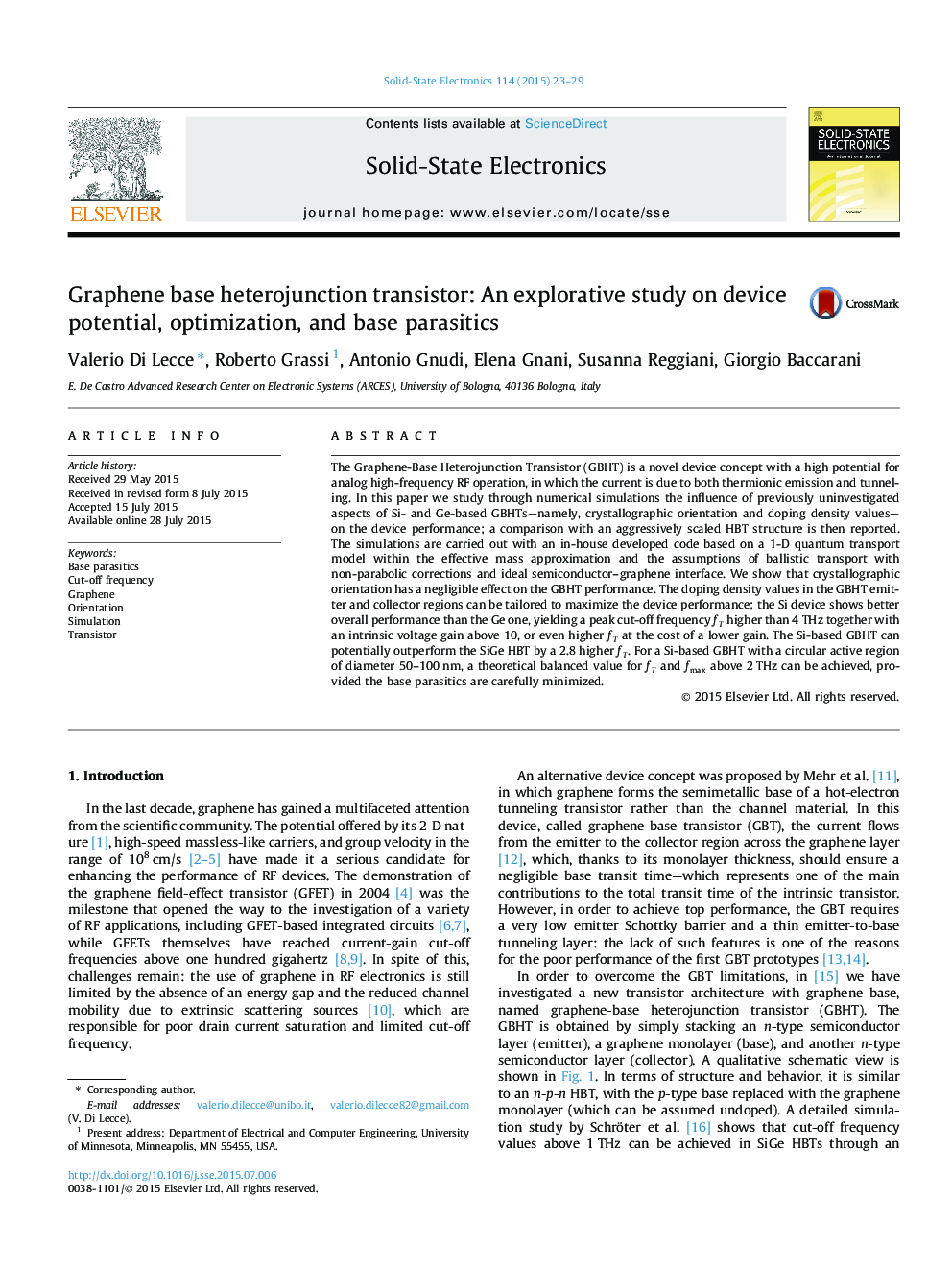| Article ID | Journal | Published Year | Pages | File Type |
|---|---|---|---|---|
| 747621 | Solid-State Electronics | 2015 | 7 Pages |
•Quantum simulations results are shown of GBHTs with ideal graphene/Si–Ge interfaces.•GBHTs can potentially outperform optimized HBTs by a 2.8 larger cut-off frequency.•The Si/Ge crystal orientation has a negligible effect on the GBHT performance.•The doping density can be tailored to maximize the device performance.•THz operation is predicted for Si-based GBHT, provided base parasitics are minimized.
The Graphene-Base Heterojunction Transistor (GBHT) is a novel device concept with a high potential for analog high-frequency RF operation, in which the current is due to both thermionic emission and tunneling. In this paper we study through numerical simulations the influence of previously uninvestigated aspects of Si- and Ge-based GBHTs—namely, crystallographic orientation and doping density values—on the device performance; a comparison with an aggressively scaled HBT structure is then reported. The simulations are carried out with an in-house developed code based on a 1-D quantum transport model within the effective mass approximation and the assumptions of ballistic transport with non-parabolic corrections and ideal semiconductor–graphene interface. We show that crystallographic orientation has a negligible effect on the GBHT performance. The doping density values in the GBHT emitter and collector regions can be tailored to maximize the device performance: the Si device shows better overall performance than the Ge one, yielding a peak cut-off frequency fTfT higher than 4 THz together with an intrinsic voltage gain above 10, or even higher fTfT at the cost of a lower gain. The Si-based GBHT can potentially outperform the SiGe HBT by a 2.8 higher fTfT. For a Si-based GBHT with a circular active region of diameter 50–100 nm, a theoretical balanced value for fTfT and fmaxfmax above 2 THz can be achieved, provided the base parasitics are carefully minimized.
